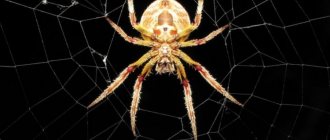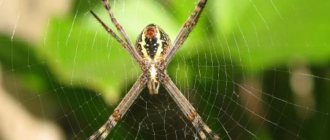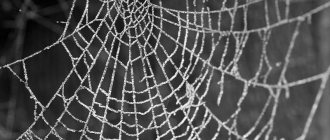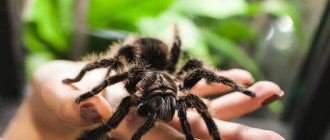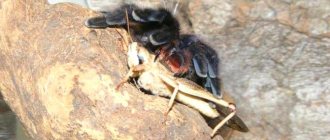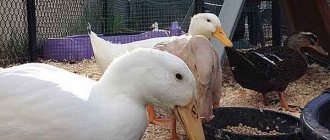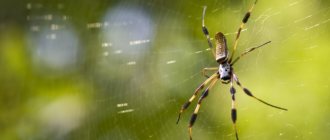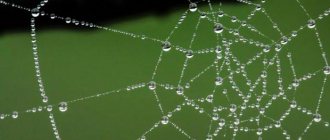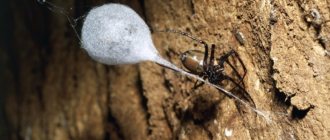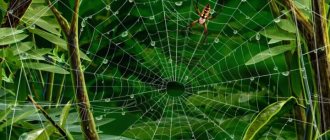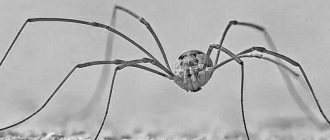How spiders make webs
A large number of arachnoid glands are located in the abdominal cavity of the spider . The ducts of such glands open into tiny spinning tubes that have access to the end part of special arachnoid warts. The number of spinning tubes may vary depending on the type of spider. For example, the very common cross spider has five hundred of them.
This is interesting! The arachnoid glands produce a liquid and viscous protein secretion, the peculiarity of which is the ability to almost instantly harden under the influence of air and turn into thin long threads.
The process of spinning a web involves pressing the spider warts onto a substrate. The first, insignificant part of the released secretion hardens and reliably sticks to the substrate, after which the spider pulls out the viscous secretion using its hind legs. In the process of removing the spider from the site of attachment of the web, the protein secretion stretches and quickly hardens. Today, seven different types of arachnoid glands, which produce different types of threads, are known and fairly well studied.
Composition and properties of the web
Spider web is a protein compound that also contains glycine, alanine and serine. The inner part of the formed threads is represented by hard protein crystals, the size of which does not exceed several nanometers. The crystals are held together by highly elastic protein bonds.
This is interesting! An unusual property of the web is its internal articulation. When hung on a spider's web, any object can be rotated an unlimited number of times without twisting.
The primary filaments are woven by the spider and become thicker arachnoid filaments . The strength indicators of the web are close to those of nylon, but are much stronger than the secretion of the silkworm. Depending on the purpose for which the web is intended to be used, the spider can produce not only sticky, but also dry thread, the thickness of which varies significantly.
Links
Animals Wool · (Mohair · Cashmere) · Silk · Catgut · Spider web · Pashmina Mineral Asbestos Chemical Synthetic Acrylic · Aramid · Arcelon · Nylon · Lavsan · Microfiber · Polyurethane fibers · Kevlar · Prolene · Monocryl Inorganic Fiberglass · Carbon
Functions of the web and its purpose
Webs are used by spiders for a variety of purposes. A shelter woven from a strong and reliable web allows you to create the most favorable microclimatic conditions for arthropods, and also serves as a good shelter both from bad weather and from numerous natural enemies. Many arthropod arachnids are capable of weaving their web around the walls of their burrow or making it into a kind of door into their home.
This is interesting! Some species use webs as transport, and young spiders leave the parental nest on long web threads, which are picked up by the wind and transported over considerable distances.
Most often, spiders use webs to weave sticky trapping networks, which allows them to effectively catch prey and provide food to the arthropod. No less famous are the so-called egg cocoons made from webs, inside which young spiders appear . Some species weave web-like safety threads that protect arthropods from falling while jumping and for moving or catching prey.
Web for reproduction
The breeding season is characterized by the release of arachnoid threads by the female, which make it possible to find the optimal pair for mating. For example, male web-slingers are capable of constructing, next to the nets created by females, miniature mating web laces into which spiders are lured.
Male cross spiders deftly attach their horizontal webs to radially arranged strands of trapping webs made by females. By striking the web with strong blows with their limbs, the males cause the web to vibrate and, in this unusual way, invite the females to mate.
Web for catching prey
In order to catch their prey, many species of spiders weave special trapping nets, but some species are characterized by the use of peculiar web lassos and threads. Spiders that hide in burrow dwellings place signal threads that stretch from the arthropod’s abdomen to the very entrance to its shelter. When prey falls into the trap, the vibration of the signal thread is instantly transmitted to the spider.
Sticky spiral trapping nets are built on a slightly different principle . When creating it, the spider begins weaving from the edge and gradually moves towards the central part. In this case, the same gap between all turns is necessarily maintained, resulting in the so-called “Archimedes spiral”. The threads on the auxiliary spiral are specially bitten by the spider.
Web for insurance
Jumping spiders use web threads as insurance when attacking a victim. Spiders attach a safety thread of the web to any object, after which the arthropod jumps on the intended prey. The same thread, attached to the substrate, is used for overnight shelter and protects the arthropod from attacks by all kinds of natural enemies.
This is interesting! South Russian tarantulas, leaving their burrow home, pull behind them a thin web thread, which allows them to quickly find the way back or the entrance to the shelter if necessary.
Web as transport
By autumn, some species of spiders hatch their young. Young spiders that survive the process of growing up try to climb as high as possible, using trees, tall bushes, roofs of houses and other buildings, fences for this purpose. Having waited for a sufficiently strong wind, the small spider releases a thin and long web.
The distance of movement directly depends on the length of such a transport web. Having waited for a good tension of the web, the spider bites off its end and takes off very quickly. As a rule, “travelers” are able to fly several kilometers on a web.
Silver spiders use webs as water transport. To hunt in bodies of water, this spider requires breathing atmospheric air. When descending to the bottom, the arthropod is able to capture a portion of air, and on aquatic plants, a kind of air bell is constructed from the web, which retains air and allows the spider to hunt its prey.
Gossamer Breathing Bell
The silverback spider hunts in water, in which it is necessary to breathe atmospheric air. Sinking to the bottom, the spider captures a portion of air at the end of the abdomen in the form of a small bubble. On plants he builds an air bell, in which the air is held in a densely woven web.
The silverback spider “seals” an oxygen molecule into its web underwater, and thus breathes.
Differences in webs by spider species
Depending on the species, spiders can weave different webs, which are a kind of “calling card” of the arthropod.
Round web
This version of the web looks incredibly beautiful, but is a deadly design. As a rule, a round web is suspended in a vertical position and has part of the adhesive threads, which does not allow the insect to escape from it. Weaving such a network is carried out in a certain sequence. At the first stage, the outer frame is made, after which radial fibers are laid from the central part to the edges. Spiral threads are woven at the very end.
This is interesting! A medium-sized circular web has more than a thousand point connections, and its production requires more than twenty meters of spider silk, which makes the structure not only very light, but also incredibly durable.
Information about the presence of prey in such a trap comes to the “hunter” through specially woven signal threads. The appearance of any breaks in such a web forces the spider to weave a new web. Old webs tend to be eaten by arthropods .
Strong web
This type of web is characteristic of nephilous spiders, which are widespread in Southeast Asia. The trapping nets they build often reach a couple of meters in diameter, and their strength allows them to easily support the weight of an adult.
Such spiders catch in their strong web not only ordinary insects, but also some small birds. Research results show that spiders of this type can produce about three hundred meters of spider silk daily.
Spider web hammock
Small, round “coin spiders” weave one of the most complex web designs. These arthropods weave flat webs on which the spider sits and waits for its prey. Special vertical threads extend up and down from the main network, which are attached to nearby vegetation . Any flying insects quickly become entangled in the vertically woven threads, after which they fall onto the flat hammock web.
Notes
- [nplus1.ru/news/2016/07/26/spider-web A hypersonic phonon band gap was found in the web]
- [www.ng.ru/science/2007-12-26/15_pauki.html?insidedoc Nanoart of spiders. Nezavisimaya Gazeta - 12/26/2007]
- ↑ 1 2
[elementy.ru/nauchno-populyarnaya_biblioteka/431210/Verevka_iz_pautiny
Rope from a web
on the website Elementy.ru] - [nplus1.ru/news/2016/05/17/spiderweb Physicists have discovered the secret of the constant tension of the web]
- [www.3dnews.ru/news/Prochnaya-sinteticheskaya-pautina-gotova-k-proizvodstvu/ 3dnews.ru: Durable synthetic web is ready for production]
- [www.nat-geo.ru/nature/47143-pauki-amazonii-vozvodyat-bashenki-i-stroyat-zabory/ National Geographic: Spiders of the Amazon erect “towers” and build “fences”]
- [blog.perunature.com/2012/12/new-species-of-decoy-spider-likely.html New Species of 'Decoy' Spider Likely Discovered At Tambopata Research Center]
- [www.membrana.ru/particle/11878 Membrana.ru:Water spiders weave their own scuba gear]
- [onlinelibrary.wiley.com/doi/10.1002/jez.410/abstract Air bells of water spiders are an extended phenotype modified in response to gas composition, Dolores Schütz, Michael Taborsky and Thomas Drapela, 2 Aug 2007 (eng.)]
- [www.membrana.ru/particle/16150 Membrana.ru: Biologists studied the leg silk of tarantulas]
- [www.membrana.ru/particle/12666 Membrana.ru: Spider webs catch prey using light]
- [www.membrana.ru/particle/12128 Membrana.ru: Decorated web attracts prey and predators]
Human use
Humanity has copied many constructive natural discoveries, but weaving a web is a very complex natural process, and at the moment it has not been possible to reproduce it qualitatively. Currently, scientists are trying to recreate the natural process using biotechnology based on isolating genes that are responsible for the reproduction of proteins that make up the web. Such genes are introduced into the cellular composition of bacteria or yeast, but modeling the spinning process itself is currently impossible.
